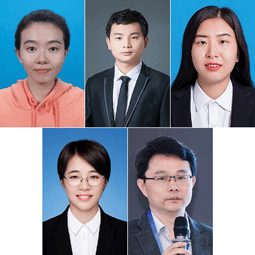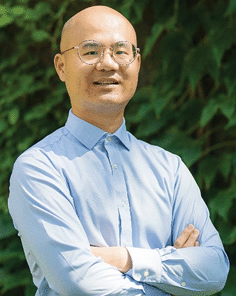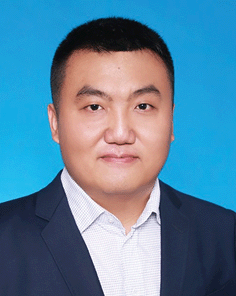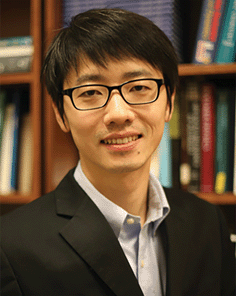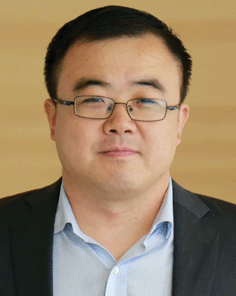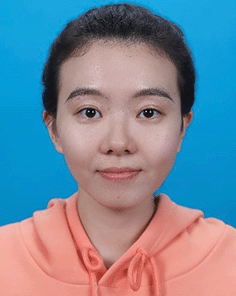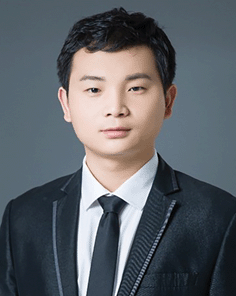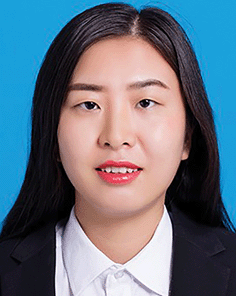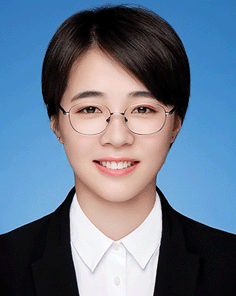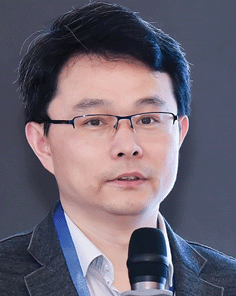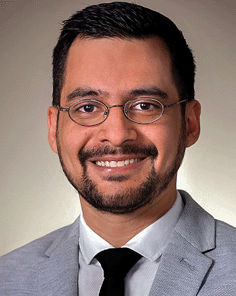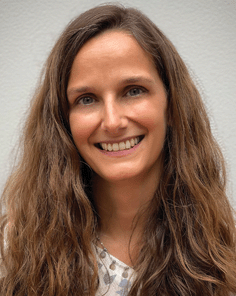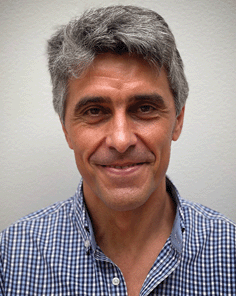Materials Horizons 2020 Outstanding Paper Award
We are delighted to introduce the winners of our 2020 Outstanding Paper Award in this Editorial.Our selection process remains the same as the past two years (see our introductory Editorial from 2019, DOI: 10.1039/C9MH90020A) retaining its focus on the science presented and the potential future impact of the work. As in previous years, the quality of the articles we published throughout 2020 was excellent, and therefore we have chosen to award not only our most Outstanding Paper, but also a runner-up and an Outstanding Review for 2020.
Please join us in congratulating our winners; we hope you enjoy reading their outstanding articles as much as we did.
Materials Horizons Outstanding Article 2020:
An ambient-stable and stretchable ionic skin with multimodal sensation
Binbin Ying, Qiyang Wu, Jianyu Li and Xinyu LiuIn this outstanding article (DOI: 10.1039/C9MH00715F) the authors present the design of a hydrogel-based, diode-like artificial ionic skin (AIskin) with controlled ion mobility, high toughness, stretchability, ambient stability and transparency. With oppositely charged polyelectrodes doped in a bilayer double-network hydrogel, the AIskin can convert mechanical strain and humidity into signals of resistance, capacitance, open-circuit voltage and short-circuit current, among which the last two are self-generated without the need of an external power supply. The AIskin is demonstrated for applications including wearable sensing, human–machine interaction and walking energy harvesting. The authors envision that this work will enable the development of next-generation, skin-inspired wearable electronics.
The results described in the article are the outcome of the extensive collaboration between Professor Xinyu Liu's Microfluidics and BioMEMS Lab at the University of Toronto and Professor Jianyu Li's Lab of Biomaterials Engineering at McGill University. Prof. Liu's research group explores fundamental science and applied technologies at the intersection of microfluidics, wearable sensing and robotics. In particular, they develop integrated micro/nanodevices and systems to target a variety of exciting applications in biology, medicine and the environment. Prof. Li's research group synergizes the principles of mechanics, chemistry, physics, biomimetics and biology, with a particular focus on developing novel materials and technologies for broad applications in engineering and medicine, including wearable devices, tissue repair, regenerative medicine, cell therapy and hemostats.
Materials Horizons Outstanding Article runner-up 2020:
Stretchable, self-healing and tissue-adhesive zwitterionic hydrogels as strain sensors for wireless monitoring of organ motions
Xinjie Pei, Hua Zhang, Yang Zhou, Linjie Zhou and Jun FuIn this outstanding article (DOI: 10.1039/D0MH00361A) the authors present tissue adhesive zwitterionic polymer hydrogels as ion conductive sensors to monitor the motions of organs. The zwitterionic moieties inside the network serve as ion transport channels, which facilitates ion conduction and strain sensing. Moreover, the zwitterionic hydrogels achieve robust adhesion to organs through non-covalent interactions at the interface. The hydrogel sensors adhered to skin or organs not only to seal wounds, but also to provide high sensitivity to subtle vibrations and motions, with the captured signals wirelessly transmitted to a computer. This opens a novel avenue for implantable flexible wireless devices for remote health monitoring and diagnostics.
Professor Fu's team at the Sun Yat-sen University focuses on tough and multifunctional hydrogels that may have applications in wearable devices and flexible electronics, tissue engineering scaffolds, artificial muscles and soft robotics. Conductive hydrogels have been developed in the team as stress and strain sensors to monitor human motions. However, robust adhesion between hydrogels and tissues is needed. X. J. Pei combined zwitterionic and mussel-inspired adhesion mechanisms to develop novel adhesive hydrogels that robustly adhere to the heart, liver and lung. Y. Zhou, as a chemist, provided a comprehensive understanding of the adhesion mechanisms. L. J. Zhou investigated the mechanical properties of the hydrogels. For applications as implant sensors, H. Zhang evaluated the biocompatibility and the potential for wound healing through in vivo studies. This teamwork represents a successful collaboration in exploring new materials and devices for promising applications.
Materials Horizons Outstanding Review 2020:
Evolution of self-healing elastomers, from extrinsic to combined intrinsic mechanisms: a review
Saul Utrera-Barrios, Raquel Verdejo, Miguel A. López-Manchado and Marianella Hernández SantanaIn this outstanding review (DOI: 10.1039/D0MH00535E) Hernández Santana et al. present the scientific evolution of self-healing polymers based on the underlying healing mechanism. They elegantly condense this evolution into four generations that comprehensively present the nature of the involved bonds and interactions (non-covalent, covalent or combinations between them), also providing the latest advances in the field of self-healing rubbers. The various cutting-edge examples presented in this review can be seen as effective alternatives for reducing waste, extending material lifetimes and contributing to the evolution of more sustainable materials.
All of the authors belong to the Polymer Composite Group (Institute of Polymer Science and Technology ICTP-CSIC, Spain) led by Prof. Miguel A. López-Manchado. The group's main research activity focuses on the development of advanced polymer (nano) composites for structural and functional applications. The research is carried out thanks to the profound understanding of the relationship between the processing, morphology, structure and final properties of the composite system. New industrial applications, based on multifunctional and hierarchical composites, self-healing materials, lightweight polymer foams, advanced polymeric electrodes and electrolytes and organic conjugated polymer-based functional nanohybrids, are continuously being explored by the group.
Dr Michaela Muehlberg, Executive Editor
Professor Seth Marder, Editorial Board Chair
Author Biographies:
Materials Horizons Outstanding Article 2020:
An ambient-stable and stretchable ionic skin with multimodal sensation
Dr Binbin Ying is currently a Natural Sciences and Engineering Research Council of Canada (NSERC) postdoctoral fellow in the Department of Mechanical Engineering at the Massachusetts Institute of Technology (MIT). Dr Ying received his BEng degree summa cum laude in Mechanical Engineering from Donghua University (2012) and his MEng degree in Biomedical Engineering from Shanghai Jiao Tong University (2015), both in China, and earned his PhD degree in Mechanical Engineering from McGill University, Canada (2020), working under the supervision of Professor Xinyu Liu and Professor Jianyu Li. He was a visiting research fellow at the University of Toronto, Canada (2018–2020). His current research is focused on the design of novel wearable electronics, ingestible electronics and biosensors for biomedical applications. His research has been reported in more than 20 news items in at least 6 languages. He is the recipient of the J. W. McConnell Memorial Fellowship (2016–2017), the L. Trottier Engineering Fellowship (2015) and the McGill Graduate Excellence Award (2015). Dr Ying is the co-founder and VP External of The Martlets Society, a webinar for young scholars connecting and exchanging their expertise.
Dr Qiyang Wu is a lecturer in the Department of Intelligent Systems Science and Engineering at Harbin Engineering University, China. He graduated from the Harbin Institute of Technology and received his PhD degree from McGill University in 2020. His current research is focused on bio-inspired underwater robots.
Dr Jianyu Li is a Canada Research Chair and Assistant Professor in the Department of Mechanical Engineering at McGill University, where he is also an Associate Member of the Department of Biomedical Engineering. He graduated from Zhejiang University and obtained a PhD degree in Mechanical Engineering from Harvard University. He conducted postdoctoral research on biomaterials at the Harvard Wyss Institute. His current research is focused on the design and mechanics of biomaterials and their biomedical applications such as tissue repair, wearable devices and regenerative medicine. He has been recognized in the Innovators Under 35, China from the MIT Technology Review, the Wyss Technology Development Award and numerous news items.
Dr Xinyu Liu is the Percy Edward Hart Professor in the Department of Mechanical & Industrial Engineering and the Institute of Biomedical Engineering, University of Toronto. Prior to joining the U of T in 2017, he was an Associate Professor and the Canada Research Chair in Microfluidics and BioMEMS in the Department of Mechanical Engineering, McGill University. He obtained his BEng and MEng from the Harbin Institute of Technology in 2002 and 2004, respectively, and his PhD from the University of Toronto in 2009, all in Mechanical Engineering. He then completed an NSERC Postdoctoral Fellowship in the Department of Chemistry and Chemical Biology (with George Whitesides) at Harvard University in 2009–2011. Among numerous recognitions, he received the Douglas R. Colton Metal for Research Excellence, the Canadian Rising Star in Global Health Award, the Christophe Pierre Award for Research Excellence, the MINE Outstanding Young Researcher Award and 8 best paper awards at major engineering and medical conferences. He is a Fellow of the American Society of Mechanical Engineers (ASME) and the Canadian Society for Mechanical Engineering (CSME).
Materials Horizons Outstanding Article runner-up 2020:
Stretchable, self-healing and tissue-adhesive zwitterionic hydrogels as strain sensors for wireless monitoring of organ motions
Xinjie Pei obtained her BSc in materials chemistry from Zhengzhou University in 2016, and a Master’s degree from the Ningbo Institute of Materials Technology and Engineering, Chinese Academy of Sciences, in 2020, supervised by Prof. Jun Fu of Sun Yat-sen University. Her research interests include functional hydrogels for flexible tissue adhesive bioelectronics.
Hua Zhang obtained his BSc in Packaging Engineering from Xi’an University of Technology in 2012. He obtained his MSc degree in Food Science from Xi’an University of Technology in 2015. He is currently pursuing a doctoral degree at the School of Materials Science and Engineering in Xi’an University of Technology, under the co-supervision of Prof. Jun Fu at the School of Materials Science and Engineering, Sun Yat-sen University. His research interests cover injectable hydrogels for tissue regeneration and 3D bioprinting.
Dr Yang Zhou obtained her BSc in pharmacy from China Pharmaceutical University in 2004. She received her PhD in biology from Nanjing University in 2013. After postdoctoral training at the Ulsan National Institute of Science and Technology (Korea, 2014–2015) and Nanjing University (China, 2014–2017), she joined the Ningbo Institute of Materials Technology and Engineering, Chinese Academy of Science as an Associate Professor in 2017. Her current research interests are focused on the structure and performance of polymeric hydrogels and their applications as biomimetic actuators.
Linjie Zhou obtained her BSc in Chemical Engineering and Technology from the China University of Petroleum (Qing Dao) in 2017, and a Master’s degree from the School of Chemical Engineering of the East China University of Science and Technology in 2020, co-advised by Prof. Jun Fu at the School of Materials Science and Engineering of Sun Yat-sen University. Her research mainly focuses on tough conductive hydrogels for application as high performance sensors.
Dr Jun Fu is a Professor at the School of Materials Science and Engineering, Sun Yat-sen University (SYSU). He obtained his BSc in applied chemistry from Wuhan University in 1999, and a PhD in polymer chemistry and physics from the Changchun Institute of Applied Chemistry, Chinese Academy of Sciences (CAS) in 2005. He was a visiting scholar at the Max Planck Institute for Polymer Research from 2005 to 2007, and a research fellow at Massachusetts General Hospital/Harvard Medical School from 2007 to 2010. He was appointed a professor at the Ningbo Institute of Materials Technology and Engineering, CAS, in 2010, and then moved to SYSU in 2019. His research focuses on high performance and functional hydrogels for biomimetic, wearable and implantable devices. Dr Fu has served as an Editor of the Journal of Polymer Science since 2021.
Materials Horizons Outstanding Review 2020:
Evolution of self-healing elastomers, from extrinsic to combined intrinsic mechanisms: a review
Saul Utrera-Barrios is a Materials Engineer (Simón Bolívar University, Venezuela) with a MSc in Plastics and Rubber (Menéndez Pelayo International University – Spanish National Research Council CSIC, Spain) and is a PhD candidate in Advanced Chemistry (Complutense University of Madrid, Spain). Since 2018, he has developed his experimental work at the Polymer Composite Group (Institute of Polymer Science and Technology, ICTP-CSIC) in the area of elastomer-based composite materials with self-healing capability, under the supervision of Dr Marianella Hernández Santana and Prof. Miguel A. López Manchado. His main scientific interests include the development, characterization and production of elastomer-based composite materials, bio-based rubber composites and intrinsic self-healing concepts.
Dr Raquel Verdejo is a Senior Research Scientist (at the Institute of Polymer Science and Technology (ICTP-CSIC, Spain)). She did her PhD in Metallurgy and Materials at the University of Birmingham (UK) and later joined Imperial College London. She returned to Spain thanks to a Juan de la Cierva fellowship and afterwards held a prestigious Ramón y Cajal position, getting tenure in 2010. She is currently the Academic Director of the Master of High Specialization in Plastics and Rubber (UIMP-CSIC). Her main line of research is focused on the development of polymer composites and nanocomposites with special emphasis on polymer foams.
Dr Miguel A. López-Manchado is a Research Professor at the Institute of Polymer Science and Technology (ICTP-CSIC, Spain). He got his PhD in Chemistry at the Complutense University of Madrid (Spain) in 1997. From 1998–2000, he had a postdoctoral position at the University of Perugia (Italy). He got a permanent position as a Tenured Researcher at CSIC in 2006. He is the author of more than 160 publications in scientific journals and books. His research activity is focused on the processing and characterization of composite materials and nanocomposites.
Dr Marianella Hernández Santana is a Materials Engineer (Simón Bolívar University, Venezuela) with a MSc in Macromolecular Physical Chemistry (Louis Pasteur University, France) and a PhD in Chemical Sciences (Complutense University of Madrid, Spain). She was awarded an individual Marie Curie Fellowship from the European Commission to work with Prof. Sybrand van der Zwaag's group at Delft University of Technology (The Netherlands, 2014–2016). Her post-doctoral research project was based on the development of rubber compounds with self-healing properties. Later, she returned to Spain with a research contract from the Ministry of Economics and Competitiveness to develop self-healing and eco-friendly rubber composites by the inclusion of tire waste (2017–2019) at the Institute of Polymer Science and Technology (ICTP-CSIC). Since 2019, she has held a Ramón y Cajal meritorious position. Her current research focuses on the implementation of circular economy principles, favoring the use of recycled and self-healing multifunctional materials. She has authored more than 80 peer-reviewed journal articles and book chapters.
| This journal is © The Royal Society of Chemistry 2021 |


